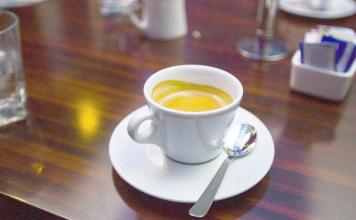Introduction to Panamanian Fine Coffee Bean Flavor Manor treated with White Honey
On October 12, 1492, the famous navigator Columbus arrived in the Bahamas on the coast of the Atlantic Ocean after crossing the Atlantic Ocean and discovered a "new" continent-America. But Columbus was convinced that he had arrived in India and gave the native American natives an iconic name: Indians. No matter what reason Columbus thought of America as India, his geographical discovery brought a new surprise to the Queen of Spain, who supported the voyage. Spain was the first to plunder huge wealth from America and thus rose rapidly on the world stage. became the only country that could compete with Portugal at that time. On the American continent, the Spaniards also leapt from a guest to a bronze statue of Columbus in Barcelona, Spain, by force, built to commemorate the 400th anniversary of Columbus's discovery of the New World. Obviously, the day Columbus arrived in the New World was not only the pinnacle of Columbus's navigation career, but also a symbol of the rise of Spain. It is precisely because of the special significance of Columbus's discovery of the American "New World" to Spain, October 12 is still Spain's National Day. The Spaniard's unfulfilled wish from the day he became the master of America, the plan to build a canal in Central America was included in the Spanish calendar. Twenty years after Columbus discovered the New World, the Spaniard Balboa discovered the Panamanian isthmus and successfully crossed from the Atlantic coast to the Pacific coast. This discovery shortens the voyage from the Atlantic Ocean to the Pacific Ocean by nearly 5,000 kilometers, and its geographical significance is by no means inferior to the great geographical discovery of Columbus. The Spaniard's experience made the Panamanian isthmus the most important alternative for the construction of the canal in the future.
Species of Geisha were discovered in the Rose Summer Forest of Ethiopia in 1931 and sent to the Coffee Research Institute in Kenya, introduced to Uganda and Tanzania in 1936, introduced to Costa Rica in 1953, and Panama was introduced in the 1970s by Mr. Francis Coselazin of the Tonba Seven Farm Garden from CATIE in Costa Rica and began to grow Rose Summer Coffee.
Geisha, sweeping the coffee world with the power of a hurricane, the coffee revolution is so fierce that the blue mountains of Jamaica and Kona of Hawaii, which have long occupied the throne of the coffee kingdom, have to stay away. This wild species, which originated in Ethiopia, is now widely used in major coffee producing areas after numerous battles, and its best spokesman is the "LaEsmeralda" estate from Panama.
History of Esmeralda Farm: founded by Hans Elliot, a Swede, in 1924, Esmeralda Farm was not a coffee grower but a ranch. Forty years later, in 1964, Mr. Danielupidason's grandfather, Ruth Lover. Mr. Bidasson bought Esmeralda Farm in order to have an old home after retirement. His grandfather, Mr. Ruth Lover Bidasson, was born in Sweden and was president of the Bank of America and director of United Nations development. His son, Mr. Brais Bidarsson, moved to Panama from California in 1973 and inherited to run his father's farm. In 1987, most of the farms were changed to grow coffee. In 1994, he invested in the machinery and equipment of refined coffee in order to create a brand. Mr. Brais Bidarson and his wife Susan also raised three children, Elligu (born in Philadelphia in 1966). Rachel (born in Sweden in 1967), Danielu (born in Panama in 1974)
(flower fragrance, sweet orange, pineapple, pineapple, vanilla, lively fragrance) famous producing areas of Panama, beans for many contestants
Hartman's story, like his coffee, is legendary. Hartman Manor is located in Chilidge, Santa Clara. The founder's name is Eloise Strauss Hartman. He was born on June 20, 1891 in the Moravilla region of Austria and Hungary in what is now the Czech Republic, and died on May 25, 1970 at the age of 78. Today's Hartman Manor is a family business founded by Latip Hartman (son of Eloise) in 1940. In 1966 Latip married Dinola Sandy of Costa Rica. They have five sons, Latipa Jr., Alan, Alexander, Alice and Kelly. Each family member is responsible for the growth management, harvesting and handling of the coffee and the visit to the manor. A family estate that has grown coffee for more than 100 years is a legend in itself.
The family business has a state cup testing laboratory and a sample baking room. Rigorous cup test of each batch of coffee fruit. This ensures that the coffee quality at Hartman Manor is stable and is always looking for progress. Their scientific attitude towards coffee and nearly 100 years of family experience ensure their excellent production.
Panama Panama
Manor: Lerlda Estate Lot10, lot 10 of Lilida
Treatment method: White honey treated Honey
Variety: Kaduai Catuai
Score and cup test CuppingScore:87
Lime,floral coconut,clean,sparkling,mediumbody
Small lime, coconut flowers, clean, lively acid, medium mellow thickness "
The unique treatment of Colombian red wine
Columbia Colombia
Manor: Nubia NUBIA, ANATOLI3-
Important Notice :
前街咖啡 FrontStreet Coffee has moved to new addredd:
FrontStreet Coffee Address: 315,Donghua East Road,GuangZhou
Tel:020 38364473
- Prev

Introduction to the unique and strong flavor of Costa Rican Yerzaro Coffee Manor
Costa Rican coffee has full particles, ideal acidity and unique strong flavor. Costa Rica's coffee industry, originally controlled by the Costa Rican Coffee Industry Company (InstitutodelCafdeCostaRica, ICAFE), has been taken over by the official Coffee Committee (OficinadelCaf). In exported coffee, those products that are considered to be of substandard quality are used in blue.
- Next

Intense Indonesian mantinen coffee flavor taste Manor region boutique coffee beans Introduction
Mantenin coffee is produced in Sumatra, Indonesia, Asia, otherwise known as Sumatra coffee. The main habitats are Java, Sulawesi and Sumatra, 90% of which are Robusta species. The most famous of these is the "Mantelin" from Sumatra. Fine traditional Arabica coffee produced in Sumatra North The best of these are named Lintong and Man.
Related
- Detailed explanation of Jadeite planting Land in Panamanian Jadeite Manor introduction to the grading system of Jadeite competitive bidding, Red bid, Green bid and Rose Summer
- Story of Coffee planting in Brenka region of Costa Rica Stonehenge Manor anaerobic heavy honey treatment of flavor mouth
- What's on the barrel of Blue Mountain Coffee beans?
- Can American coffee also pull flowers? How to use hot American style to pull out a good-looking pattern?
- Can you make a cold extract with coffee beans? What is the right proportion for cold-extracted coffee formula?
- Indonesian PWN Gold Mandrine Coffee Origin Features Flavor How to Chong? Mandolin coffee is American.
- A brief introduction to the flavor characteristics of Brazilian yellow bourbon coffee beans
- What is the effect of different water quality on the flavor of cold-extracted coffee? What kind of water is best for brewing coffee?
- Why do you think of Rose Summer whenever you mention Panamanian coffee?
- Introduction to the characteristics of authentic blue mountain coffee bean producing areas? What is the CIB Coffee Authority in Jamaica?

